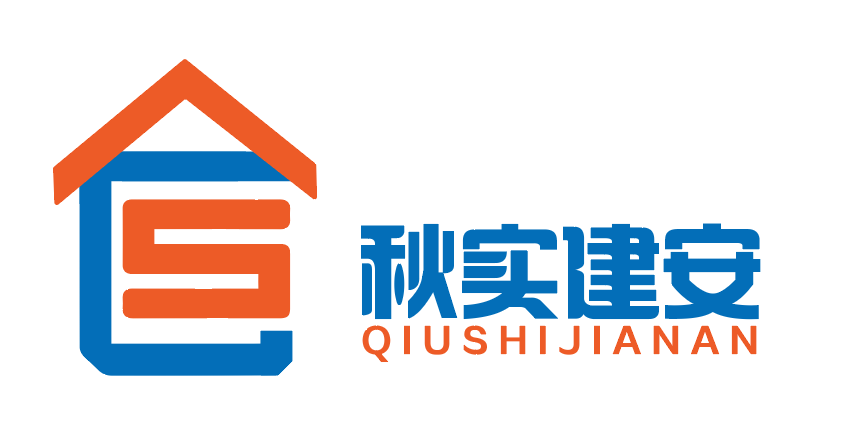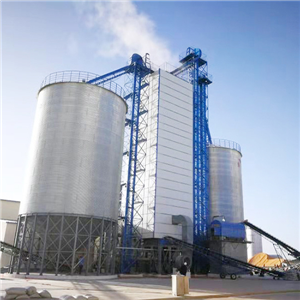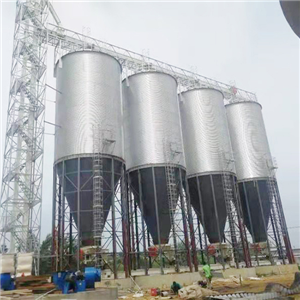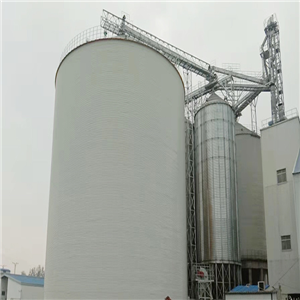Grain storage is a cornerstone of national food security, directly impacting food quality and market value. Factors such as moisture content, damaged grains, moldy kernels, and storage environment temperature/humidity are primary causes of grain deterioration. In recent years, with the promotion of green grain storage concepts, low-temperature storage and controlled atmosphere (CA) technologies have emerged as industry focal points. Low-temperature storage, by maintaining grain pile temperatures below 15°C, slows aging and preserves quality, while CA storage regulates nitrogen and carbon dioxide levels to significantly reduce deterioration. The future of grain storage lies in a synergistic "low-temperature + CA" model, integrated with intelligent monitoring systems, enabling energy-efficient and high-performance storage management. This development aligns with national green development strategies and offers advanced solutions for global grain loss reduction.
Grain storage safety is vital to public welfare, with pre-storage quality control serving as the first line of defense. Research identifies moisture content, damaged grains, and moldy kernels as the "three major risks" affecting stored grain quality:
Moisture Content: Accelerates grain metabolism and interactions with the external environment. Data shows that wheat with moisture exceeding 13% faces significantly higher mold risks. National standards strictly limit safe moisture levels to 14% for corn and 12.5% for wheat.
Damaged Grains: Correlate directly with safety—each 1% increase in damaged corn kernels raises fatty acid values, while damaged wheat kernels show a proportional rise in toxin release.
Moldy Kernels: Over 282 mold species have been identified in grains. When moldy corn kernels exceed 2%, toxin and zearalenone exceedance rates reach 60% and 80%, respectively.
Additionally, impurity levels (≤1% per national standards) and pest density (≤5 insects/kg) directly impact safety. Strict adherence to standards, combined with green technologies like "low-temperature + CA," is critical to eliminating risks at the source.
Storage environments face severe challenges, with temperature, humidity, and pests as key deterioration drivers. Scientific environmental control is essential to slowing quality decline:
Temperature: Rice germination rates drop significantly when warehouse temperatures exceed 20°C—declining by only 5% at 23.5°C but plummeting at higher temperatures.
Humidity: At 30°C, increasing humidity from 45% to 85% reduces rice lysine content by 32%, causes 27.6% crude fat loss, and raises fatty acid values by 87.8%. High humidity also accelerates pest reproduction—meat mites mature 30% faster at 95% humidity than in low-humidity environments.
Modern warehouses address these challenges with intelligent systems, integrating temperature/humidity monitoring and linked ventilation to maintain temperatures below 20°C and humidity around 65%. Enhanced infrastructure and smart controls provide multi-layered protection for safe storage.
China’s grain storage sector is undergoing a major transformation, with low-temperature and CA technologies emerging as reliable pillars of food security:
Low-Temperature Storage: Maintaining temperatures below 15°C significantly slows aging. Ground-source heat pump technology stabilizes grain temperatures at 13.5°C, while internal circulation systems reduce temperatures from 20.7°C to 17.8°C and humidity from 49.2% to 24%, boosting storage stability.
CA Storage: Achieves 100% pest mortality within 15 days under 98% nitrogen concentration, with zero chemical residues. CO₂-based CA limits rice fatty acid increases to 0.375, outperforming traditional methods.
While chemical fumigation remains in limited use, it is gradually being replaced by greener alternatives. The synergistic "low-temperature + CA" model, combining physical and environmental controls, preserves quality while ensuring green, harmless storage. Technologies like physical ventilation, internal circulation, and nitrogen CA are now widely deployed nationwide, with intelligent systems enabling precise regulation. As "green storage" gains traction, these technologies will extend storage cycles, enhance quality, and provide uncompromising technical safeguards.
As grain storage technologies advance, China is moving toward greener, smarter solutions. The integrated "low-temperature physical control + CA environmental management + intelligent monitoring" system forms a scientific, multi-link protection network for grain safety. From pre-storage quality checks to environmental optimization and green technology adoption, every stage works in harmony to secure grain storage.
As a leader in the grain storage industry, LIAONING QIUSHI is committed to aligning with national green development strategies, continuously innovating storage solutions. With the deep integration of IoT and big data, green storage technologies will strengthen national food security, underpin agricultural modernization, and contribute to sustainable grain strategies.
To explore grain storage safety solutions, visit
www.qssilo.com or contact our technical team at alex@qssilo.com for expert support.
Grain Storage




